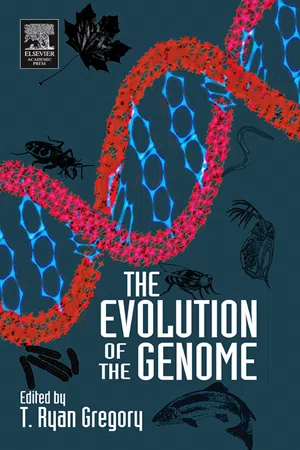
- 768 pages
- English
- ePUB (mobile friendly)
- Available on iOS & Android
The Evolution of the Genome
About This Book
The Evolution of the Genome provides a much needed overview of genomic study through clear, detailed, expert-authored discussions of the key areas in genome biology. This includes the evolution of genome size, genomic parasites, gene and ancient genome duplications, polypoidy, comparative genomics, and the implications of these genome-level phenomena for evolutionary theory. In addition to reviewing the current state of knowledge of these fields in an accessible way, the various chapters also provide historical and conceptual background information, highlight the ways in which the critical questions are actually being studied, indicate some important areas for future research, and build bridges across traditional professional and taxonomic boundaries.
The Evolution of the Genome will serve as a critical resource for graduate students, postdoctoral fellows, and established scientists alike who are interested in the issue of genome evolution in the broadest sense.
- Provides detailed, clearly written chapters authored by leading researchers in their respective fields
- Presents a much-needed overview of the historical and theoretical context of the various areas of genomic study
- Creates important links between topics in order to promote integration across subdisciplines, including descriptions of how each subject is actually studied
- Provides information specifically designed to be accessible to established researchers, postdoctoral fellows, and graduate students alike
Frequently asked questions
Information
Genome Size Evolution in Animals
Publisher Summary
WHY SHOULD ANYONE CARE ABOUT GENOME SIZE?
GENOME SIZE IN ANIMALS: A HISTORICAL PERSPECTIVE
THE DISCOVERY OF DNA
Table of contents
- Cover image
- Title page
- Table of Contents
- LIST OF CONTRIBUTORS
- PREFACE: THE EVOLUTION OF THE EVOLUTION OF THE GENOME
- ABOUT THE EDITOR
- Part I: The C-value Enigma
- Part II: The Evolution of Genomic Parasites
- Part III: Duplications, Duplications…
- Part IV: …And More Duplications
- Part V: Sequence and Structure
- Part VI: The Genome in Evolution
- INDEX